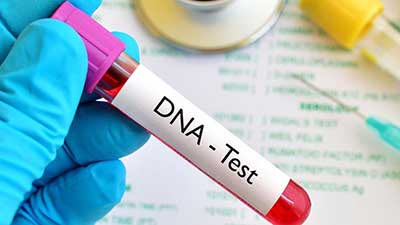Date: 01/11/2022
Relevance: GS-3: Science and Technology- developments and their applications and effects in everyday life.
Key Phrases: Right To Privacy, DNA Profiling, Ashok Kumar Judgment, Proportionality Of The Legitimate Aims, Indian Evidence Act,1872, DNA Polymorphisms
Why in News?
- The Supreme Court has recently held in a case concerning a woman that compelling an unwilling person to undergo a DNA test would be a violation of his/her personal liberty and right to privacy.
- The decision highlights the spreading use of a technology that aids the cause of justice on the one hand but violates privacy on the other.
Key Highlights:
- The number of complainants seeking requests for DNA tests is increasing at a rate of 20% per year.
- However, Deoxyribonucleic acid or DNA tests occupy a grey area in the pursuit of justice.
- It incorporates the threat of self-incrimination as well as encroachment on individual privacy although it is of eminent need to find the truth in the form of evidence in a criminal case, a claim of marital infidelity, or proving paternity as a DNA test is the only tool that can deliver justice in cases of abandonment of mothers and children.
Precedents set by the court on DNA tests:
- Bhabani Prasad Jena, 2010: Judges cannot order genetic tests as a “roving inquiry” and the DNA tests should not be ordered if there was other material evidence at hand to prove the case.
- Ashok Kumar judgment: The court held that the judges should examine the “proportionality of the legitimate aims” being pursued before ordering a genetic test.
- Varying stances of the Apex Court and High Courts: The issue is problematized by the varying stances of both the apex court and High Courts that tend to focus on the particularities of each case.
Issues with the DNA tests:
- While dealing with claims of infidelity, a request for a DNA test competes with the conclusiveness of Section 112 of the Indian Evidence Act,1872 which presumes that a child born to a married woman is legitimate and the burden of proof is on the person claiming illegitimacy of the child.
- The imperative of justice contradicts that of bodily autonomy of the individual and the surge of requests for DNA tests encompasses the threat of privacy and concerns about possible abuse of data.
- In Justice K. S. Puttaswamy and Ors. Vs Union of India case, the apex court has interpreted the Constitution to include the right to privacy as a fundamental right.
- A DNA sample of an individual can provide additional information with regard to that individual other than his identity.
What is DNA?
- The DNA (Deoxyribonucleic Acid) is a complex molecule that contains all the information necessary to build and maintain an organism.
- DNA can be extracted from saliva, hair, blood, bones, semen, and from other organs of the body.
- The DNA of every person is unique in itself, and variations in the sequence of DNA can be used to match individuals and identify them.
- DNA Technique helps in the identification of criminals on the scientific lines.
- The DNA technique is basically made up of amino acids and it is matched with the bases which provide the key to determining the genetic blueprints of a living being.
What Is DNA Testing /Profiling/fingerprinting?
- DNA profiling is the process of determining an individual's DNA characteristics.
- The first step in DNA profiling is to procure relevant DNA samples. Only a few cells from a person’s skin or the root of a hair — or from bodily fluids like blood, saliva, or semen are needed to build a unique DNA profile.
- DNA is often discovered at crime scenes during police investigations, after which persons of interest may be asked to voluntarily provide their DNA sample.
- If there is a strong body of evidence against a suspect, the courts can order them to provide a DNA sample.
DNA polymorphisms:
- DNA profiling is the process where a specific DNA pattern, called a profile, is obtained from a person or sample of bodily tissue.
- Most of the DNA in a person is actually identical to other people’s DNA.
- However, specific regions vary highly between people. These regions are called polymorphic. Differences in these variable regions between people are known as polymorphisms.
- Each individual inherits a unique combination of polymorphisms from their parents. DNA polymorphisms can be analyzed to give a DNA profile.
- The DNA from any two people is 99.9% identical, with that shared blueprint guiding the development and forming a common thread across the world.
- The differing 0.1% contains variations that influence the uniqueness among individuals, which when combined with the environmental and social contexts gives them abilities, health, and behavior.
Use of DNA profiling:
- identify the probable origin of a body fluid sample associated with a crime or crime scene
- reveal family relationships or test for parentage
- identify disaster victims, accident victims, or missing people
What are short tandem repeats?
- One of the current techniques for DNA profiling uses polymorphisms called short tandem repeats.
- Short tandem repeats (or STRs) are regions of non-coding DNA that contain repeats of the same nucleotide sequence.
- STRs are found at different places or genetic loci in a person’s DNA.
Source: The Hindu
Mains Question:
Q. The number of complainants seeking requests for DNA tests is increasing at a rate of 20% per year. However, Deoxyribonucleic acid or DNA tests occupy a grey area in the pursuit of justice. Critically Examine. (150 words).






















